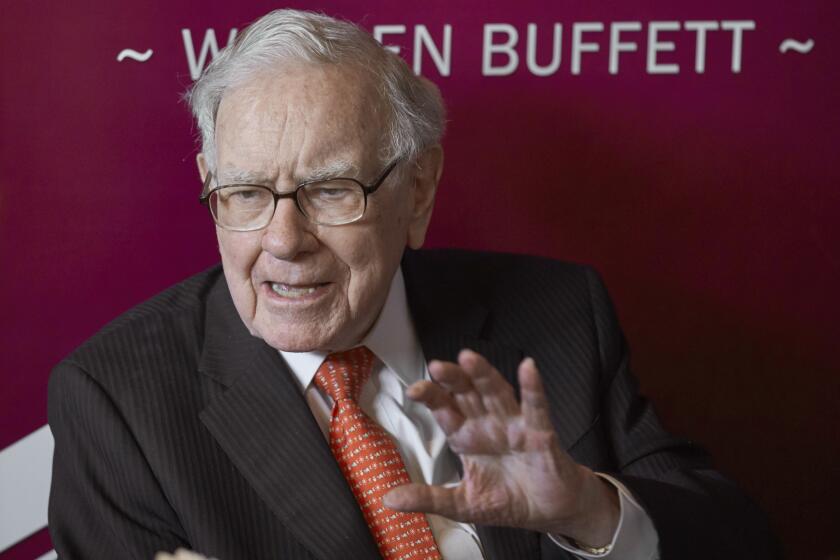How I Made It: Panda Express’ billionaire CEO dishes up a stir-fry empire
- Share via
The gig: Peggy Cherng, 66, is co-chair and co-chief executive of Panda Restaurant Group, one of the most recognizable Chinese restaurant chains in the world. The Rosemead-based firm, which owns Panda Express, operates 1,800 eateries and employs 26,000 people. The privately held company reached $2.2 billion in revenue last year, nearly doubling in just four years.
Immigrant success story: Cherng was born in Myanmar, also known as Burma, and raised in Hong Kong. She moved to the United States for college. She met her Chinese-born husband, Andrew Cherng, her freshman year at Baker University in Kansas. Andrew and his father, Ming-Tsai Cherng, went on to run a restaurant in Pasadena called Panda Inn. Peggy Cherng has a graduate degree in electrical engineering and worked for 3M and McDonnell Douglas, where she was coding simulators for the U.S. Navy, before joining the family business full time in the early 1980s after the death of her father-in-law. When the owner of the Glendale Galleria proposed that the pair open a quick-serve location in his mall, the Cherngs pounced on the opportunity. That first Panda Express opened in 1983, launching a stir-fry empire. “We’re a Chinese American company,” Cherng said.
Family business: Panda is one of the largest privately held restaurant chains. The company considered going public in the 1990s. “Luckily we didn’t,” Cherng said. “Our business mentality is to focus on people and food and less on profit. If we went public, maybe we would have had to change our philosophy.” Cherng said she was satisfied with the profit margin, which she described as over 10%.
Organizational master: While her husband was focused on expanding stores, Cherng was in charge of developing a system to streamline operations at the restaurants. By 1983, she introduced a system commonly known today as “point of sale,” in which staff can punch in meal orders on a computer. “I think we were one of the first to use POS,” Cherng said. “It was confusing at the beginning, especially when everyone got nervous and pressed the wrong buttons. But it made everything more efficient.”
Beyond the mall: Panda Express succeeded in shopping centers with the help of a captive audience. But to build out the brand, the company had to open street locations. That would enable Panda to design its own dining rooms and bolster the look and feel of its marketing. The street stores didn’t get the same foot traffic, so Cherng had to introduce promotions such as discounts to get diners through the door. Even the food had to be handled differently. Cooks started preparing favorites such as orange chicken in smaller batches so that customers would have fresher food from which to choose. “We prefer to have dishes on the steam table for 20 minutes,” Cherng said. “Anything longer than 45 minutes we have to discard because vegetables will turn brown.”
Trying something fresh: The company is experimenting with a new style of restaurant it calls an innovation kitchen — an answer of sorts to the fast-casual restaurant boom a la Chipotle. Visitors can customize orange chicken wraps or order drinks from a tea bar where boba can be added. Located in Pasadena’s Hastings Ranch area, the innovation kitchen features plush sofas and flat-screen TVs. Glass-door refrigerators display tubs of uniformly cut vegetables the way a steakhouse would for dry-aged beef. “It’s appealing for the younger generation,” she said of the format, which has been applied to some of the chain’s conventional locations.
The Panda way: Cherng said employees are imbued with a sense of personal development. They are encouraged to take business and management courses. Self-help books and business leaders’ biographies are offered to employees at a discount. Instead of primarily hiring outside instructors for the company’s office gym in Rosemead, it paid for some employees to get certified to teach yoga and crossfit training. Employees can also access a development program called the University of Panda, which teaches skills such as public speaking and even self-defense. The company prides itself in stacking a significant number of its corporate office positions with employees who started on the kitchen floor. “You have to evolve,” Cherng said. “You can’t stay still.”
Living well: Peggy and Andrew Cherng have a net worth pegged by Forbes magazine above $3 billion. The couple, who live in South Pasadena, have three adult children. The company’s philanthropic arm, Panda Cares, has raised or contributed more than $40 million to charities in the U.S. and abroad, mainly for underserved youth. An annual golf tournament raises more than $1 million a year for the charity.
Twitter: @dhpierson
More to Read
Inside the business of entertainment
The Wide Shot brings you news, analysis and insights on everything from streaming wars to production — and what it all means for the future.
You may occasionally receive promotional content from the Los Angeles Times.











